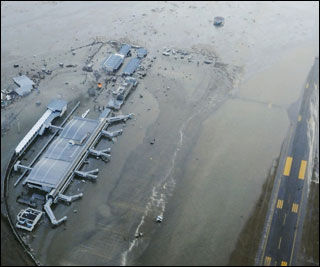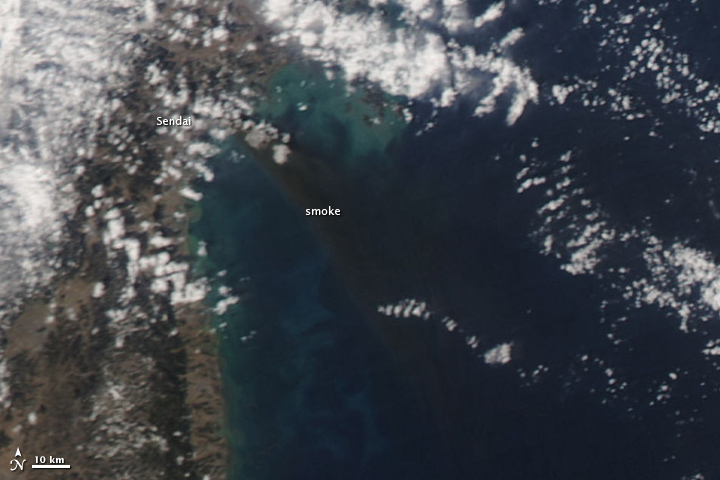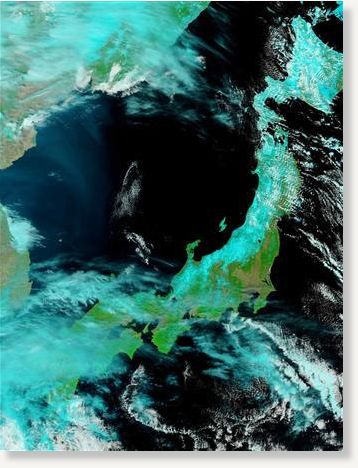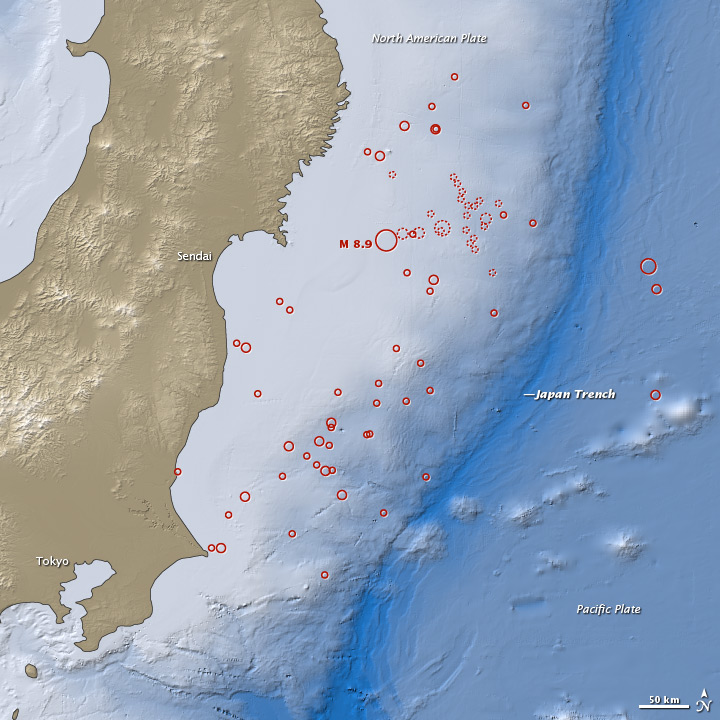
© UnknownThe tarmac and surrounding area of Sendai Airport is covered with water after a tsunami.
Tokyo - A strong 6.7-magnitude earthquake felt in Tokyo hit Japan's mountainous Niigata prefecture and caused landslides and avalanches at 4:00 am Saturday (1900 GMT Friday).
Kyodo News said there were no immediate reports of casualties and no fresh tsunami alert was issued after the quake, which was followed by an almost equally strong quake in the same area half an hour later.
The quakes struck in the west of the main Honshu island, on the Sea of Japan coast and far from the offshore Pacific Ocean tremor that triggered a mammoth tsunami Friday that is feared to have killed more than 1,000 people.
The focus of both predawn quakes was in central Niigata.
The US Geological Survey put the strength at 6.2 and said it hit at a depth of only one kilometre (about half a mile).
Police said they had received reports of a landslide and avalanche in Tokamachi and another avalanche in Tsunan town, Kyodo reported.
The news agency also said wooden buildings including a town hall and a garage had reportedly been destroyed and some highways cracked in the village of Sakae in Nagano prefecture.
The first quake in the inland region struck at 4:00 am Saturday (1900 GMT Friday). The focus was in central Niigata but it also shook neighbouring Nagano, and a third quake later followed in the region.


